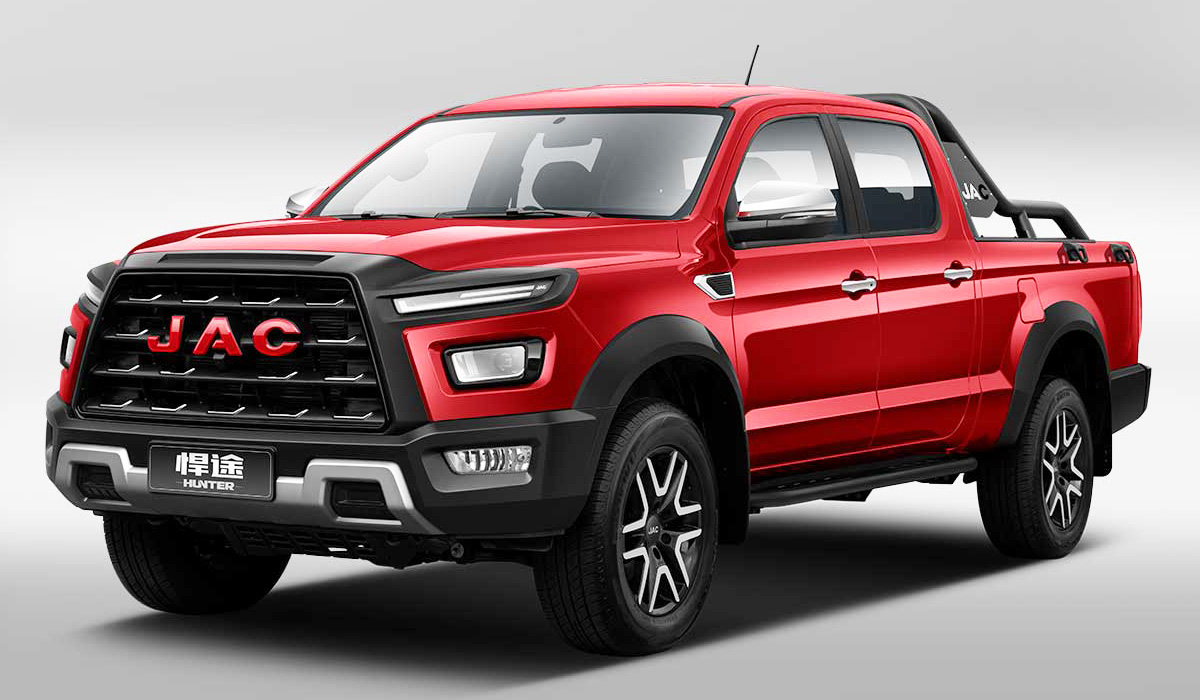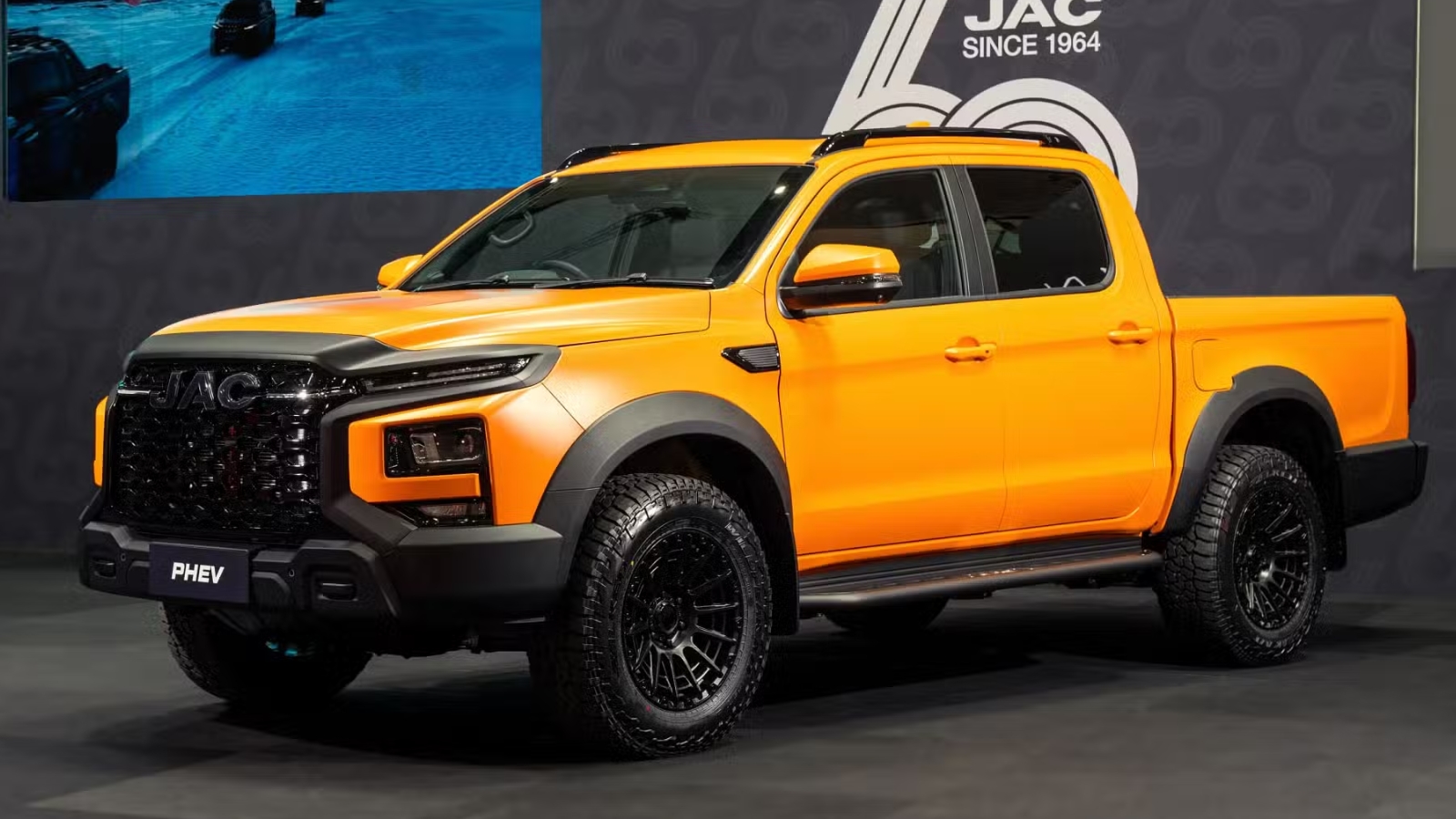Chinese automaker JAC has chosen Australia for the global launch of their most powerful vehicle yet – the Hunter PHEV. This plug-in hybrid dual-cab ute promises to shake up the increasingly competitive hybrid truck market when it arrives in early 2026.
What Makes the Hunter PHEV Special?
The Hunter PHEV isn’t just another hybrid truck. JAC has engineered this vehicle specifically to meet Australian conditions and expectations. The company took their existing T9 diesel ute (known globally as the Hunter) and completely reimagined it with hybrid technology.
This new model will compete directly with established players like the BYD Shark 6, GWM Cannon Alpha PHEV, and the upcoming Ford Ranger PHEV. For buyers, this means more choice in a market that’s rapidly evolving toward electrification.
Performance That Actually Matters
The numbers are impressive, but what do they mean for real-world use? The Hunter PHEV combines a 2.0-litre turbocharged petrol engine with dual electric motors, delivering 385kW of power and 1000Nm of torque.
For context, that’s more power than many sports cars. But the real benefit comes in how this translates to practical use – smoother acceleration when overtaking, better hill-climbing ability when towing, and instant torque delivery that makes city driving more responsive.
Electric Range and Real-World Benefits
Daily Driving Without Fuel
The 32kWh lithium iron phosphate battery provides at least 100km of electric-only driving. For many people, this covers their daily commute entirely. You could drive to work, run errands, and return home without using any petrol.
This electric range also means quieter operation during early morning starts – helpful for tradies who need to leave residential areas without disturbing neighbors.
Vehicle-to-Load Technology
One standout feature is the vehicle-to-load (V2L) capability. This transforms your ute into a mobile power station, able to run tools, camping equipment, or even emergency power for your home. For workers who need power tools on remote job sites, this eliminates the need for separate generators.
Key Specifications Comparison
| Feature | JAC Hunter PHEV | Current T9 Diesel |
|---|---|---|
| Power Output | 385kW | 110kW |
| Torque | 1000Nm | 360Nm |
| Electric Range | 100km+ | N/A |
| Towing Capacity | TBA (expected 3200kg) | 3200kg |
| Payload | TBA (expected 1045kg) | 1045kg |
| Fuel Type | Petrol/Electric | Diesel |
Interior and Design Changes
Familiar Yet Modern
Inside, the Hunter PHEV maintains the practical layout of the diesel T9 but adds modern touches. The most noticeable change is a rotary gear selector replacing the traditional shifter – a common feature in hybrid vehicles that provides more precise control over the different drive modes.
The cabin retains the rugged, work-focused design that Australian buyers expect from a dual-cab ute, while incorporating the digital displays needed to monitor battery status and hybrid system operation.
Market Position and Competition
Timing and Strategy
JAC’s decision to debut this vehicle in Australia demonstrates their commitment to our market. The early 2026 launch timing positions them well against competitors, potentially arriving around the same time as the Ford Ranger PHEV.
For buyers, this increased competition typically means better pricing, more features, and improved after-sales support as manufacturers compete for market share.
Who Should Consider This Vehicle?
The Hunter PHEV makes sense for several buyer profiles:
Urban Tradies: Those who drive in cities daily but need weekend towing capability will benefit from electric driving during the week and full power when needed.
Fleet Operators: Companies looking to reduce fuel costs and emissions while maintaining capability will find the hybrid system appealing.
Recreational Users: Families who want a capable weekend adventurer with lower running costs for daily use.
What We Don’t Know Yet
Pricing and Specifications
JAC hasn’t announced Australian pricing or final specifications. Given the competitive market, expect pricing to be aggressive – likely positioned between the current T9 diesel and premium hybrid competitors.
The company has confirmed that payload and towing capabilities will match what “Australians expect,” suggesting figures similar to the current 3200kg towing capacity and 1045kg payload.
Dealer Network and Support
JAC’s relatively small dealer network in Australia could be a consideration for some buyers. However, the company has been expanding their presence, and hybrid vehicles typically require less frequent servicing than traditional engines.
The Bigger Picture
The Hunter PHEV represents more than just another vehicle option. It’s part of Australia’s transition toward electrified transport, offering a practical stepping stone for buyers who aren’t ready for full electric vehicles but want to reduce their environmental impact.
For many Australians, this could be their first experience with plug-in hybrid technology in a practical, work-capable package.
Frequently Asked Questions
Q: When will the JAC Hunter PHEV be available in Australia?
A: JAC has confirmed a launch date of early 2026, with pricing and specifications to be announced closer to launch.
Q: How does the electric range work in real-world conditions?
A: The 100km+ electric range covers most daily commuting needs, allowing many users to drive on electric power alone during the week.
Q: Will it maintain the same towing capacity as the diesel version?
A: JAC hasn’t confirmed exact figures but states it will have the “hard-working capabilities Australians expect,” suggesting similar 3200kg towing capacity.
